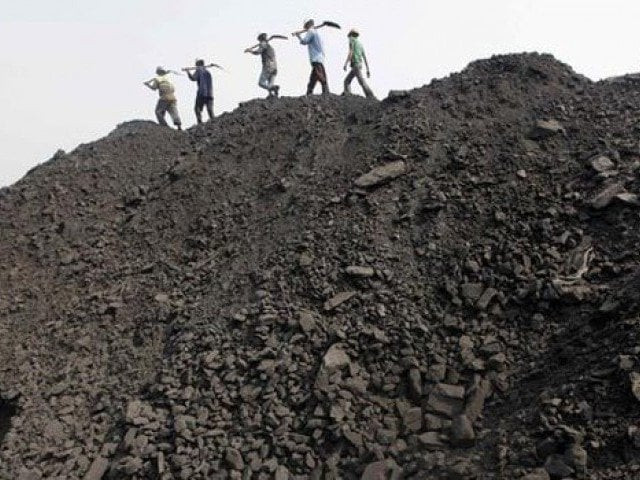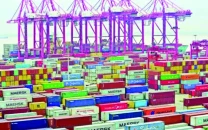Potential of coal gasification
Country can implement coal projects, but window of opportunity appears to be limited

Pakistan imports more than 45% of its total energy requirement annually.
With dwindling gas resources and lack of discovery of new oil and gas resources, energy dependence will increase unless dedicated efforts are made to discover new resources and increase the utilisation of existing resources.
Pakistan has one of the largest lignite (brown coal) resources, which can be termed almost limitless (185 billion tons). Despite this, coal imports have been increasing and are projected to increase to 20 million tons ($2 billion) in the current year.
It is due to installation of power plants based on imported coal unnecessarily in the past and also due to rising cement and brick production.
There is an urgent need to increase the utilisation of Thar resources, although there is growing international opposition to the use of coal due to greenhouse gas (GHG) emissions and the consequent unsavoury impact on climate.
Energy requirement is not limited to the power sector. We have power surplus, causing an increase in circular debt due to unutilised capacity. There is thermal energy demand from transport, industry, fertiliser, residential and other sectors.
We have noted price and supply instability issues recently in the case of liquefied natural gas (LNG). LNG prices shot up so high that the suppliers could not honour their contractual commitments. Qatar gas contract is posing its own challenges. It has been noted that LNG is no panacea. As opposed to burning coal in boilers and producing steam which, in turn, turns steam turbines and power generator, coal is gasified in gasifier vessels by heating it under low supply of oxygen/air.
This produces syngas, which is an intermediate product. By further treatment, it is converted into final products, energy and chemicals such as fertilisers, hydrogen, petrochemicals, olefins, plastics and synthetic natural gas (SNG), together with transport fuels such as diesel, DME and gasoline.
Coal gasification (surface) has come of age. In China and South Africa, the market and technology is fairly established.
South Africa has been producing diesel since the late 1950s out of its vast coal resources. China has been producing SNG, diesel, other fuels, fertilisers, chemicals, methanol, petrochemicals and plastic (polypropylene).
Around 800-1,000 million tonnes per annum (mtpa) of coal of various grades is being used in this sector. China’s National Energy Administration has laid out plans to produce 1.75 trillion cubic feet (tcf) of SNG from coal, enough to satisfy more than 10% of China’s total gas demand.
India has recently launched a major coal gasification programme to install coal gasification capacity of 100 mtpa by the year 2030, involving an investment of $65 billion.
Coal cost
A major problem, however, in coal gasification is the cost of coal. Current cost of Thar coal is twice the international cost of coal with same specifications and geological conditions.
Fortunately, consensus is emerging on reducing the Thar coal rates. With reduced financial cost and by employing right technologies and the right scales, it is possible to bring down Thar coal rates to $25-30 per ton.
Recent IPP agreements provide guidelines for reducing the financial cost – return on equity (ROE) of 12% instead of 18-20% and debt interest rate of Libor plus 2% instead of 4.5%. A recent study done by a respectable Chinese company has concluded that if Thar coal cost is brought to $25 per ton, diesel can be produced out of it at internationally competitive rates.
It has been speculated that similarly SNG can be produced at a rate comparable with LNG rates ($6-7 per million British thermal units – mmbtu) or slightly lower.
There is a question of economies of scale. Current minimum scale is 200 million cubic feet per day (mmcfd). One can progressively install 200mmcfd modules to increase supply to eventually reach a level of 1,000-2,000 mmcfd. One unit may cost $1.2 billion.
Eventually, petrochemical units may be added to utilise syngas or SNG. SNG is simply methane, as good as natural gas, which can be transported via gas network.
In Pakistan, there are three products which have great demand and possibilities of production out of coal gasification, which are gas, fertiliser and diesel.
Diesel has a stable supply chain and may be delayed while SNG production may have to be given priority. Existing fertiliser plants at the Sindh-Punjab boundary may be converted to syngas by transporting syngas produced at mine’s mouth by laying a pipeline of 300-400 km.
Technology has been developed for the transport of hydrogen, which is closer to syngas features. New fertiliser plants can be installed at mine’s mouth. A price of $6 per mmbtu should be affordable to the fertiliser sector.
Clean coal
There is confusion about whether coal gasification is clean from the environmental perspective. The majority opinion is that it solves the local pollution problem by absorbing or not producing local pollutant gases. It, however, produces more CO2 than a coal power plant.
Energy security requires diversity, supply security, price stability, affordability and importability in terms of having enough foreign exchange, if imported. Local energy resources, especially coal, do meet these requirements.
Local energy resources may not, however, be cheaper or saving foreign exchange. Inefficiencies, avoidable and unavoidable, leakages and elite capture can be undoing the local resource advantages.
Local energy production may save only 50% or less of foreign exchange, as there are direct and indirect imported inputs which are required in local production. Nonetheless, it is better to save foreign exchange at a reasonable cost premium. It is much better, if the local cost is lower than the imported one.
There is a risk, however. International opposition to coal is increasing. Europe is closing down its coal power plants. No new coal power plants are being allowed except in India and China.
It is quite possible that there may be trade limitations imposed on products made from coal energy. A 5-10% tax on imports by Europe and the US may be quite damaging.
There would be no financing available from international financial institutions, which may mean total dependence on China with implications for costs and prices, although we enjoy a strategic relationship with China and would expect a supportive trade and technology interaction in this respect.
This is speculation only but may come out to be true. It does not mean that we cannot implement coal projects, but the window of opportunity appears to be limited, thus more reason to get cracking on coal gasification.
Concluding, energy security requires resource diversity and a reasonable mix. All eggs need not be put in one basket, however, large that basket may be.
The writer is former member energy of the Planning Commission and author of a number of books on Pakistan’s energy sector
Published in The Express Tribune, February 22nd, 2021.
Like Business on Facebook, follow @TribuneBiz on Twitter to stay informed and join in the conversation.









1733130350-0/Untitled-design-(76)1733130350-0-208x130.webp)









COMMENTS
Comments are moderated and generally will be posted if they are on-topic and not abusive.
For more information, please see our Comments FAQ